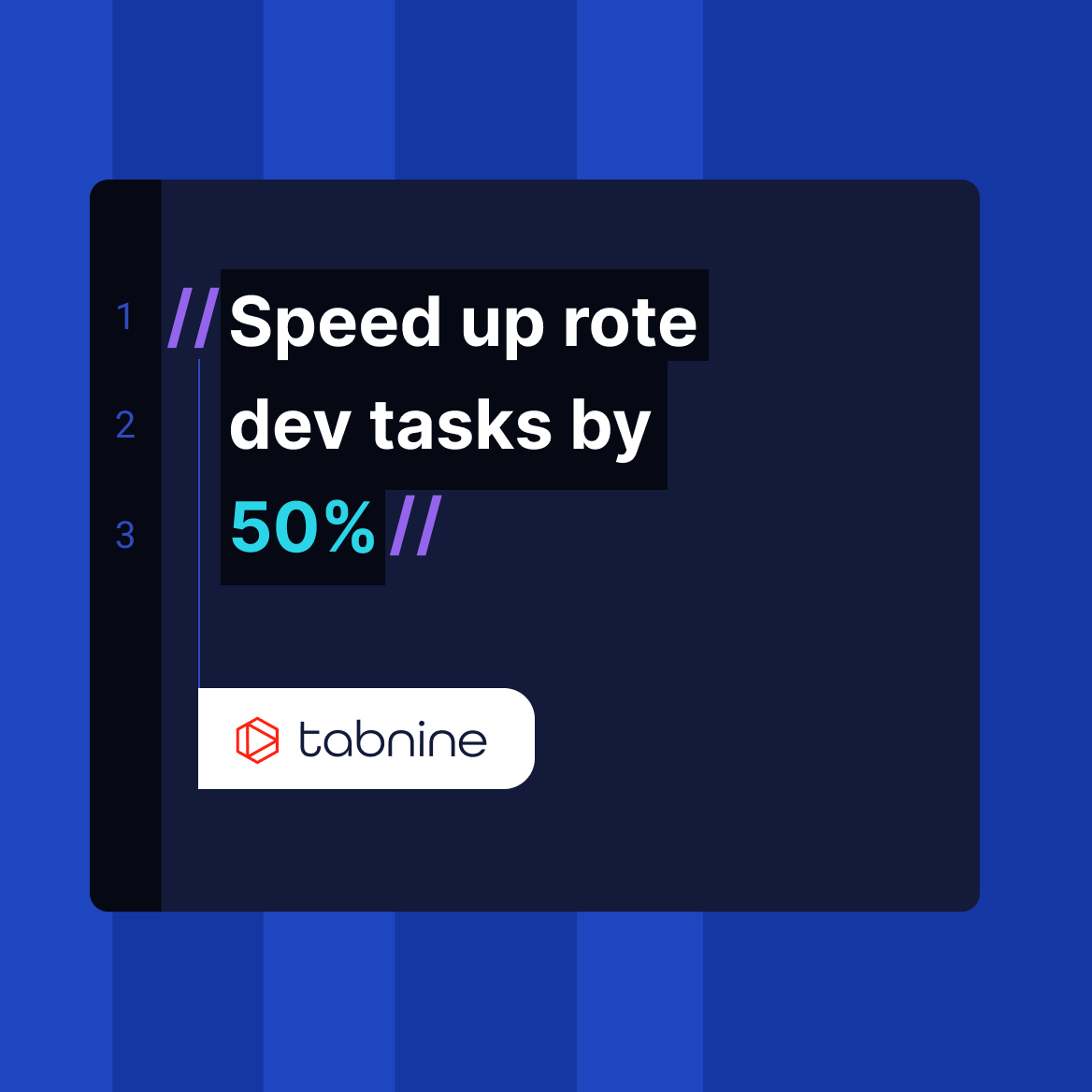Table of contents
Code documentation: Types, tools, and challenges
//
What is code documentation?
Code documentation is like a road map for a software project. It describes what the code does, how it does it, and why it does it that way. It helps developers understand the code, its dependencies, and its workflow.
When we talk about code documentation, we don’t just mean comments in the code. It also includes administrator and developer guides, API documentation, and system documentation. It can be both internal (for the team) and external (for the end users). Documentation is an essential part of the software development cycle, and yet it’s often neglected or seen as a burden.
The primary purpose of code documentation is to explain the purpose and functionality of the code to other developers. It also serves as a reference for future development and maintenance, both for your future self and for other developers who will work on the code.
Benefits of code documentation
Easier onboarding for new team members
One of the main benefits of code documentation is that it makes onboarding new team members easier. When a new developer joins a project, they can spend days or even weeks trying to understand the codebase. Good documentation can cut this time down dramatically.
New team members can quickly get up to speed with the project’s structure, design decisions, and coding standards. It also helps them understand their roles and responsibilities in the project. Code documentation provides a quick and easy way for them to familiarize themselves with the project and start contributing faster.
Streamlining maintenance and debugging
Code documentation is also crucial for maintaining and debugging the software. It’s not uncommon for a developer to spend hours debugging a problem that could have been solved in minutes with better documentation.
Well-documented code provides clear and concise explanations of the code’s functionality, making it easier to locate and fix bugs. It also helps to prevent the introduction of new bugs during maintenance. By understanding the code’s inner workings, developers can make changes without disrupting existing functionality.
Supporting agile development
In an agile environment, where changes are frequent and a codebase evolves continuously, documentation plays a key role. It helps keep track of changes and ensure that everyone on the team is on the same page.
Documentation in an agile environment needs to be concise, clear, and up-to-date. It should provide a quick overview of the code’s functionality, its dependencies, and any changes made in recent iterations. This allows the team to work in sync and move forward at a rapid pace.
Enhancing collaboration and communication
Code documentation is not just about explaining the code; it’s also about enhancing collaboration between developers. It provides a common language for discussing the code and making collective decisions and fosters knowledge sharing.
Types of code documentation
Here are the main types of code documentation:
- Inline comments: Placed directly within the source code to explain the purpose and functionality of a particular piece of code, and intended for other developers who might be reading the code
- API documentation: Describes the programming interface exposed by a software component, including details about the functions, classes, return types, arguments, and more
- Developer guides: Explain how developers can work with a system, contribute to its development, and accomplish common tasks
- System documentation: Describes the system’s design and functionality, including information about the code, architecture, data flow, interfaces, and more
- Documentation as code: Documentation that’s treated just like the rest of the source code, written in a format that can be version controlled, reviewed, tested, and automated
Code documentation in popular programming languages
Here’s how code documentation is typically done in some of the most popular programming languages:
Code documentation in Java
Java is one of the most widely used programming languages and follows a strict syntax that lends itself well to detailed documentation. The JavaDoc Tool is commonly used for generating API documentation in HTML format from Java source code. JavaDoc comments, beginning with /** and ending with */, are used to document classes, methods, and fields.
Java documentation also includes annotations, which provide metadata about the code. These annotations can be used by the compiler or other tools to generate additional code, perform validations, or produce documentation. JavaDoc tags like@param, @return, and @throws are used to describe method parameters, return values, and exceptions respectively.
Code documentation in Python
Python developers enjoy the simplicity and readability of the language. The Python community believes in making code highly readable, and even self-explanatory. Python uses docstrings for documentation that are written within triple quotes ”’ enabling multiline comments.
Python docstrings can be written in various formats such as the reStructuredText (reST) and Google style. Docstrings are not only used for documentation but also for automated testing and API documentation. Tools like Sphinx can extract these docstrings to create comprehensive documentation.
Code documentation in JavaScript
In the world of JavaScript, JSDoc is a popular tool for generating API documentation. Similar to JavaDoc in Java, JSDoc uses tags and type annotations in comments to document functions, variables, classes, and more.
The main advantage of JSDoc is its flexibility. It supports custom tags, allowing developers to adapt the documentation to the specific needs of their project. Additionally, modern JavaScript frameworks like Vue and React have their own ways of documenting components, making it easier for developers to maintain and refactor code.
Code documentation in C#
C# uses XML documentation comments, which start with /// or /**. These comments are used to generate XML files that can be used by the compiler, the integrated development environment (IDE), or other tools to provide IntelliSense or to generate API documentation.
C# documentation comments also support various tags for describing different parts of the code. For instance, the summarytag provides a brief description of a type or a member, the paramtag describes a method parameter, and the returnstag describes the return value of a method.
What to look for in code documentation tools
Here are a few key features of modern documentation tools:
Language support
Language support is the most basic requirement for a code documentation tool. The tool should understand the syntax and semantics of the programming language you are using. It should also support the specific features of the language, such as annotations in Java or decorators in Python.
Automatic documentation generation
Automatic documentation generation can save a lot of time and effort. The tool should be able to parse the source code and generate documentation based on comments, annotations, and other metadata. It should also be able to update the documentation automatically when the source code changes.
Customization and extensibility
Every project has unique documentation needs. Therefore, the tool should be customizable and extensible. It should allow you to define custom tags, formats, and templates. It should also support plugins or extensions to add additional functionality.
Integration with development environments
Integration with development environments can significantly improve the documentation workflow. The tool should integrate seamlessly with your preferred IDE or text editor. It should provide features such as syntax highlighting, autocompletion, and error checking for documentation comments.
Collaboration features
Collaboration features are important for team projects. The tool should support version control systems, allow multiple authors, and provide features for reviewing and approving changes. It should also support different output formats for sharing the documentation with other stakeholders.
Documentation as code
The concept of documentation as code is becoming increasingly popular in the software development community. It treats documentation with the same level of importance as code. The documentation resides in the source code repository, undergoes the same version control processes, and is subject to code reviews. This approach ensures that the documentation is always up-to-date with the code and that all team members are involved in maintaining it.
Challenges of traditional code documentation
Despite the importance of code documentation, it’s often neglected and raises serious challenges for many development teams.
Code documentation uses valuable development resources
In software development teams, time is a precious commodity. Traditional code documentation is a time-consuming process, requiring developers to meticulously write down the functionality of their code. This process takes away valuable development time that could otherwise be used to write new code or improve existing code.
Moreover, the task of documentation isn’t a one-time process. Every time the code is modified, the corresponding document must also be updated. This constant cycle of writing and rewriting documentation puts a significant strain on the development resources, both in terms of time and manpower.
Code documentation must be frequently updated
Code documentation isn’t static — it grows and evolves with the code. Every change, every bug fix, and every feature addition must be reflected in the documentation. Ignoring these updates can lead to outdated or misleading documentation, which can confuse future developers who might rely on it to understand the code’s functionality.
However, keeping up with these changes is easier said than done. In a fast-paced environment where code changes on a daily basis, updating documentation consistently can be a daunting task.
Code documentation is rarely comprehensive
Despite the considerable time and effort invested in traditional code documentation, it seldom provides a comprehensive understanding of the code. It’s difficult, if not impossible, to capture
every nuance and every decision behind the codebase, and some of these nuances might be critical for future work on the code.
Furthermore, code documentation often focuses solely on the what aspect (i.e., what a specific piece of code does). The why aspect (i.e., why a certain approach was chosen over others, or why a specific bug fix was implemented in a certain way) often gets lost in the documentation process. This lack of comprehensive knowledge can pose significant challenges during code refactoring.
Automating code documentation with Tabnine
Large development teams can’t function effectively unless everyone commits to writing thorough documentation. The problem is that most developers would rather be writing code than documenting it. Tabnine is an AI coding assistant that makes generating documentation easy. Simply highlight the code you want to document, and then ask Tabnine through the chat window to create documentation. With local and global context awareness enabled, Tabnine will generate documentation that’s in alignment with your coding standards and formatting.
Tabnine utilizes a large language model (LLM) trained on reputable open source code with permissive licenses, StackOverflow Q&A, and even your entire codebase (Enterprise feature), while ensuring all of your intellectual property remains protected and private. This means it generates more relevant, higher quality, and more secure code than other tools on the market.
The Tabnine in IDE Chat allows developers to communicate with a chat agent in natural language and get assistance with various coding tasks, such as:
- Generate new code
- Generating unit tests
- Getting the most relevant answer to your code
- Mention and reference code from your workspace
- Explain code
- Extending code with new functionality
- Refactoring code
- Documenting code
Onboarding Agent for Tabnine Chat
Tabnine Onboarding Agent helps developers onramp to a new project faster. For developers who are new to an organization or existing developers who are new to a project, the Onboarding Agent provides a comprehensive overview of key project elements, including runnable scripts, dependencies, and overall structure to help them get up to speed effortlessly.
Learn more how to use Tabnine AI to analyze, create, and improve your code across every stage of development:
Try Tabnine for free today or contact us to learn how we can help accelerate your software development.



